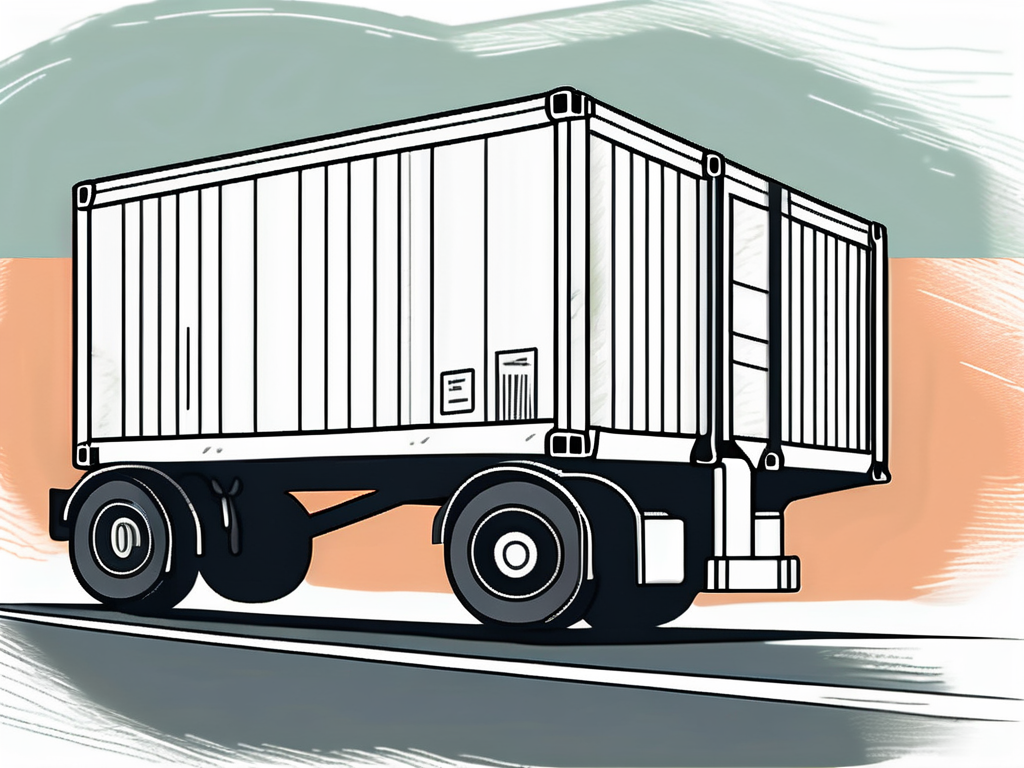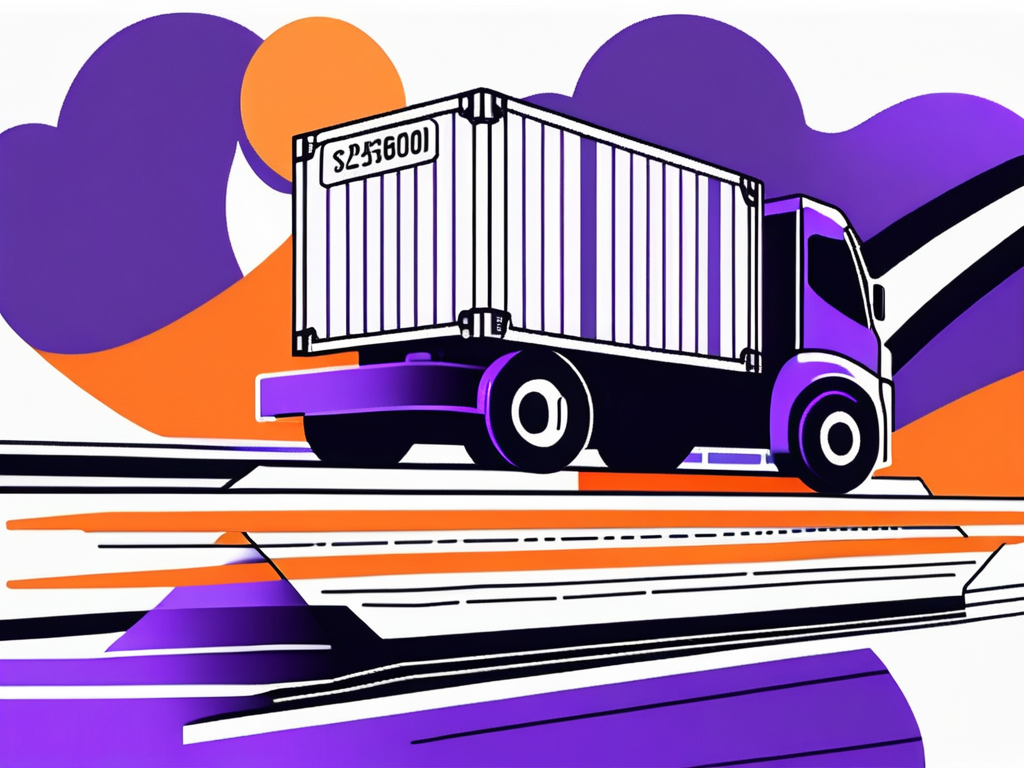Where to Put Shipping Label on Box? Expert Guidelines

Did you know that properly placing a shipping label on your package can make a significant difference in the delivery process?
Whether you’re shipping a small parcel or a large box, knowing the correct label placement on a box is crucial for ensuring smooth transportation and timely arrival at its destination.
As the saying goes, “A well-placed label is a step closer to a successful delivery!” So, let’s dive into the world of shipping label placement and learn how to avoid the common pitfalls.
Shipping Label Placement Tutorial
Proper shipping label placement is crucial for ensuring smooth and efficient delivery of your packages.
Incorrectly placed labels can lead to:
- delays
- misdeliveries
- or even damage during transit
To avoid these issues and streamline the shipping process, it’s important to follow best practices for labeling.
If you’re handling bulk shipments, 3PL services in the USA can help optimize labeling and logistics for seamless operations.
For industries such as automotive warehousing, where precise and timely delivery is paramount, adhering to optimal labeling practices becomes even more critical. Automotive warehousing operations often deal with high-value and sensitive components, making accurate shipping label placement a key component of the logistics process.
To achieve the best results, consider the following guidelines:
- Label Placement Location: Always place the shipping label on the largest flat surface of the box. This ensures that the label is easily visible and can be scanned without obstruction. Avoid placing labels on seams, edges, or corners where they might get damaged or obscured during handling.
- Label Orientation: Position the label with the barcode or tracking code facing outward. This orientation helps scanning equipment read the label quickly and accurately. Make sure the label is not folded or crumpled, as this can hinder readability.
- Avoid Obstructions: Ensure that the shipping label is not covered by tape or other packaging materials. Covering the label can obscure critical information and make it difficult for shipping personnel to scan or read the details.
- Consider Label Size: Use appropriately sized labels for the dimensions of your package. A label that is too small may not be easily visible, while one that is too large may cover important package information.
- Secure Attachment: Affix the label securely to the package using an adhesive that can withstand the rigors of shipping. The label should be firmly attached to prevent it from peeling off during transit.

Standard Placement for Different Box Sizes
For most standard-sized boxes, it is recommended to affix the shipping label on the top surface of the package, preferably in the center. This placement ensures optimal visibility and easy scanning during handling and sorting processes. Avoid placing the label on seams, closures, or areas that may be covered or damaged during transit.
On the other hand, for smaller packages, such as envelopes or padded mailers, attaching the label along one of the longer sides is a common practice. This placement allows for easy identification and reading of the label without obstructing the packaging material or compromising its integrity.
Need fast fulfillment for retail brands? Fulfyld’s retail fulfillment solutions ensure safe, secure, and accurate shipping.
Special Considerations for Irregularly Shaped Packages
When dealing with irregularly shaped packages, such as cylinders, tubes, or triangular boxes, label placement requires extra attention.
Ideally, locate a flat surface area on the package where the label can be placed securely without wrinkling or curling. The goal is to maximize visibility and readability, ensuring that there are no obstacles hindering the barcode or essential information.
Remember, if the package has any unusual features or protrusions, such as handles or flaps, avoid covering them with the label. The last thing you want is an illegible barcode or an incomplete address due to poor placement.
The Role of Shipping Labels in Logistics
Shipping labels are the unsung heroes of the logistics industry. They contain vital information like the sender’s and recipient’s addresses, tracking numbers, and even barcodes. These labels serve as a communication bridge between you, the carrier, and the delivery personnel, ensuring that your package reaches the right hands in a smooth and efficient manner.
Tips for Securing Your Shipping Label
Once you’ve determined the correct placement for your shipping label, it’s essential to ensure that it stays in place throughout the entire journey. Here are some practical tips to help you secure your label effectively.
Managing high-value inventory? Fulfyld’s secure order fulfillment ensures safe handling & shipment.

Choosing the Right Adhesive for Your Label
Use adhesive labels specifically designed for shipping purposes to ensure that your packages arrive in pristine condition. These labels are formulated to withstand the rigors of transportation, including varying temperature conditions and rough handling.
If you’re involved in temperature controlled fulfillment, it’s crucial to select labels with adhesives that can endure fluctuating temperatures without compromising their stickiness. Ensure that the adhesive is strong enough to adhere firmly to the chosen surface without leaving any residue or peeling off during transit.
- When selecting adhesive labels, opt for ones with a strong initial tack to ensure they bond quickly and securely to the package.
- Additionally, consider the surface material of your package – different adhesives perform better on certain surfaces.
- Choose an adhesive that is compatible with the material of your package to prevent premature label detachment and ensure that your labels remain intact throughout the fulfillment process.
Weatherproofing Your Shipping Label
Consider using weatherproof pouches or laminating your label to protect it from moisture, rain, or extreme weather conditions. This extra layer of protection acts as a shield against potential damage, ensuring that the label remains intact and clearly readable, even in challenging environments.
Furthermore, if your package is being shipped internationally or through regions with unpredictable weather patterns, it’s advisable to invest in labels that are not only weatherproof but also UV-resistant. UV-resistant labels can prevent fading or deterioration of the label due to prolonged exposure to sunlight, maintaining the legibility of the information throughout the shipping process.
Common Mistakes to Avoid When Applying Shipping Labels
While we’ve covered the dos of shipping label placement, let’s not forget about the don’ts. Avoiding these common mistakes will further increase the chances of a successful delivery.
Experiencing labeling errors & shipping delays? Fulfyld’s automated fulfillment ensures error-free processing.
Avoiding Overlapping Labels
Never overlap shipping labels or cover existing barcodes or important information. Overlapping labels can confuse scanning systems and cause delays or misplacements. If you need to remove or replace a label, ensure that there are no traces or remnants left that could cause confusion during sorting and handling.
Ensuring Visibility and Readability of Labels
Remember, your shipping label is meant to be seen and read. Avoid placing the label on surfaces that are textured, reflective, or patterned, as they can interfere with scanning devices and make it difficult for delivery personnel to identify the package’s destination. Opt for smooth, clean, and unobstructed surfaces to ensure maximum visibility and readability.
Additionally, it is crucial to consider the orientation of the shipping label. Placing the label upside down or sideways can lead to scanning errors and delays in the sorting process. Make sure the label is affixed in the correct orientation, typically with the barcode positioned for easy scanning in the vertical direction.
Protecting Labels from Damage
Another important aspect to keep in mind is protecting the shipping label from damage. Exposure to harsh weather conditions, such as rain or extreme heat, can cause the label to smudge or fade, rendering it unreadable. To prevent this, consider using a clear plastic sleeve or adhesive label pouch to shield the label from external elements while ensuring it remains visible and intact throughout the delivery journey.
The Role of Shipping Labels in Tracking and Delivery
Shipping labels and tracking go hand in hand. These labels provide a unique identification code that allows you and the carriers to track your package’s journey from the moment it leaves your hands until it reaches its final destination.
How Shipping Labels Facilitate Package Tracking
By using advanced scanning technology, carriers can effortlessly track your package’s whereabouts at every stage of its journey. The visible barcode on the label acts as a beacon, enabling efficient scanning and automatic updates of its location. This real-time tracking not only gives you peace of mind but also helps carriers prioritize and expedite the delivery process.
The Connection Between Label Placement and Delivery Speed
Believe it or not, proper label placement can affect the speed of your package’s delivery. When the label is correctly positioned, it can be easily scanned and processed without delay. On the other hand, incorrect or haphazard placement may lead to manual intervention, slowing down the overall delivery speed. It’s always better to invest a little extra time in adhering to label placement guidelines to ensure a speedy and efficient delivery.
Place Your Labels Properly for Smooth Operations
Proper shipping label placement is an essential step toward ensuring a successful and timely delivery. By understanding the importance of label placement, following the guidelines for different package types, and avoiding common mistakes, you can vastly improve your chances of a smooth shipping experience.
Remember, a well-placed label is like a passport for your package, guiding it through the intricate web of logistics and delivering it to its intended destination with utmost care and precision.
For seamless fulfillment and shipping solutions, Fulfyld provides expert logistics support to help businesses streamline their shipping operations.
Happy shipping!